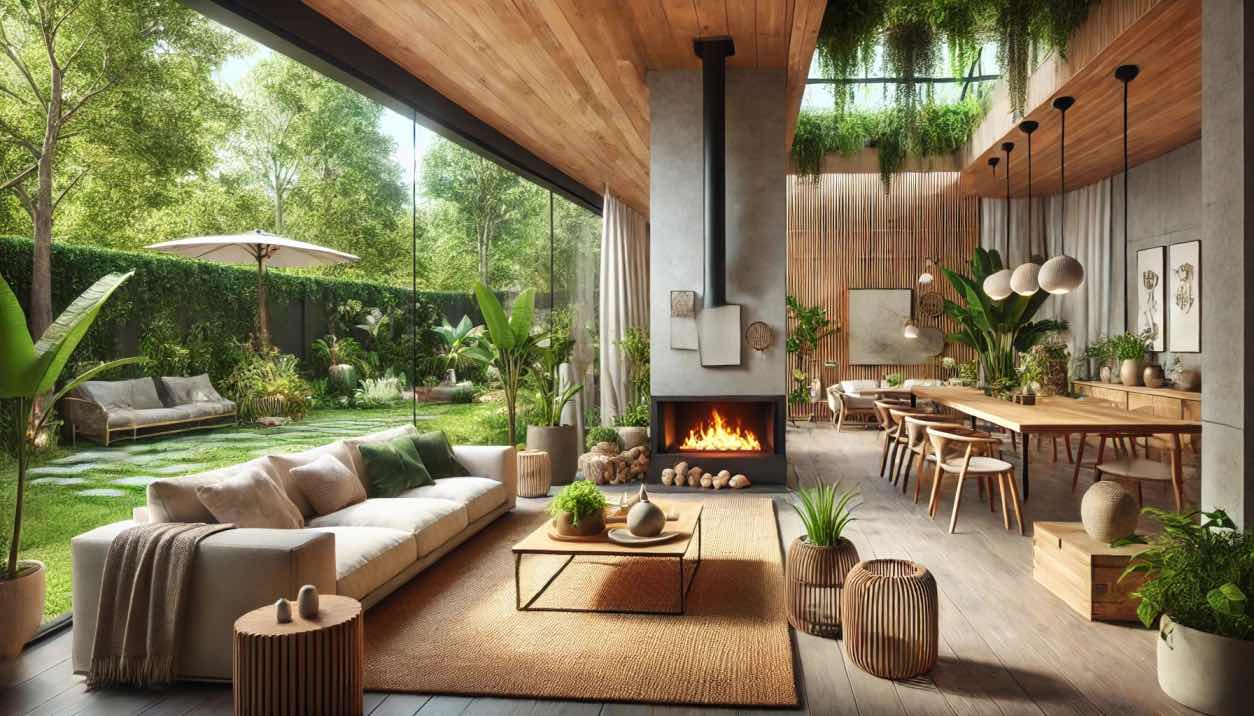Creating an environmentally conscious home interior requires thoughtful consideration of materials, manufacturing processes, and lifecycle impact. According to leading estate agents in Norfolk, homes featuring sustainable interiors not only contribute to environmental preservation but also increasingly attract environmentally conscious buyers and typically maintain their value better over time. Understanding how to make sustainable choices in home décor and furniture helps create beautiful spaces that respect both aesthetics and environmental responsibility.
Understanding Sustainable Interior Design
Sustainable interior design extends beyond simply choosing eco-friendly materials. It encompasses the entire lifecycle of furniture and décor items, from sourcing and manufacturing to eventual disposal or recycling. This holistic approach considers environmental impact, human health, and social responsibility at every stage.
The Foundation of Sustainable Choices
Making sustainable interior choices begins with understanding several key principles that guide environmentally conscious design:
Longevity becomes paramount when selecting furniture and décor. A well-made wooden table that lasts fifty years creates far less environmental impact than several cheaper tables replaced every few years. This perspective transforms how we view the initial cost of furniture, encouraging investment in quality pieces that endure.
Local sourcing reduces transportation emissions while supporting regional craftspeople. When furniture travels shorter distances from maker to home, it significantly reduces its carbon footprint. A locally made piece might generate only 20% of the transport-related emissions compared to imported furniture.
Natural materials typically offer better environmental credentials than synthetic alternatives. For instance, solid wood furniture from sustainably managed forests actually stores carbon throughout its lifetime, while also being repairable and eventually biodegradable.
Sustainable Furniture Selection
Material Considerations
The choice of furniture materials significantly impacts environmental footprint:
Reclaimed Wood Furniture demonstrates exemplary sustainability. Each piece saves existing timber from waste whilst preventing the harvest of new trees. Moreover, reclaimed wood often possesses unique character from its previous life, creating distinctive furniture pieces with stories to tell.
Bamboo offers remarkable sustainability credentials. Growing up to one metre daily in optimal conditions, bamboo regenerates rapidly compared to traditional hardwoods. Furniture made from bamboo combines durability with environmental responsibility.
Natural Fibres in upholstery provide sustainable alternatives to synthetic materials. Organic cotton, hemp, and wool offer durability while being biodegradable at end of life. These materials also typically require less energy in manufacturing compared to synthetic alternatives.
Manufacturing Processes
Understanding how furniture is made helps inform sustainable choices:
Traditional Joinery techniques, which avoid metal fasteners and synthetic adhesives, create furniture that can be completely recycled or composted at end of life. These methods also typically produce more durable pieces that can be repaired rather than replaced.
Zero-Waste Manufacturing processes increasingly influence furniture design. Some manufacturers now create furniture that utilises every part of the raw material, reducing waste to near zero. This approach not only conserves resources but often results in unique design elements.
Sustainable Décor Choices
Natural Textiles and Finishes
Textiles play a crucial role in interior design and offer numerous sustainable options:
Organic Textiles provide environmentally responsible choices for curtains, cushions, and upholstery. Beyond environmental benefits, these materials typically contain fewer chemicals, contributing to healthier indoor air quality.
Natural Dyes derived from plants offer sustainable alternatives to synthetic colorants. These dyes typically require less water in production and release fewer harmful chemicals into the environment.
Lighting Choices
Sustainable lighting combines energy efficiency with thoughtful material choices:
LED Fixtures manufactured from recycled materials exemplify sustainable lighting design. Modern LED technology reduces energy consumption by up to 90% compared to traditional bulbs, while recycled materials minimize manufacturing impact.
Natural Light Optimisation through thoughtful window treatments can significantly reduce artificial lighting needs. Properly positioned mirrors and reflective surfaces can increase natural light penetration by up to 200% in some spaces.
Creating Circular Interiors
Design for Longevity
Sustainable interiors should accommodate future changes:
Modular Furniture systems allow for reconfiguration rather than replacement when needs change. This adaptability extends furniture lifespans while reducing waste.
Timeless Design choices resist short-term trends, creating spaces that remain appealing for longer periods. This approach naturally reduces the environmental impact of frequent redecorating.
End-of-Life Considerations
Responsible disposal or repurposing of interior elements requires planning:
Furniture Repair and Restoration skills help extend the life of existing pieces. Many traditional furniture items can be restored multiple times, each restoration potentially adding decades to their useful life.
Material Recovery becomes easier when furniture is designed for disassembly. Some contemporary manufacturers now provide take-back programmes, ensuring responsible end-of-life processing of their products.
Future Trends in Sustainable Interiors
Emerging Materials
Innovation continues to expand sustainable options:
Mycelium-Based Materials, grown from mushroom roots, offer promising alternatives for everything from insulation to decorative elements. These materials are completely biodegradable while requiring minimal energy in production.
Recycled Plastics increasingly appear in designer furniture, transforming waste into durable, attractive pieces. Advanced recycling processes now produce materials suitable for high-end furniture applications.
Smart Technology Integration
Technology increasingly supports sustainable interiors:
Automated Climate Control systems optimise heating and cooling based on occupancy patterns, potentially reducing energy consumption by 30-40%.
Smart Lighting Systems adjust artificial light levels in response to natural light availability, maximising energy efficiency while maintaining optimal illumination.
Conclusion
Creating sustainable interiors requires thoughtful consideration of materials, manufacturing processes, and lifecycle impacts. Success comes through combining aesthetic preferences with environmental responsibility, creating spaces that please both the eye and the conscience.
The future of interior design increasingly aligns with sustainable principles, driven by both environmental necessity and consumer preference. By making informed choices about furniture and décor, homeowners can create beautiful, sustainable spaces that contribute to environmental preservation while maintaining their value and appeal.
For those embarking on sustainable interior design projects, the key lies in balancing immediate aesthetic desires with long-term environmental impact. Through careful selection of materials, consideration of manufacturing processes, and attention to lifecycle impacts, it becomes possible to create stunning interiors that respect both design principles and environmental responsibility.





